Madhya Pradesh is often celebrated for its iconic heritage sites like Gwalior Fort, Khajuraho Temples, and the UNESCO-listed Sanchi Stupa. Yet hidden across this vast landscape are numerous lesser-known forts and palaces that speak volumes of the state’s rich and vibrant history. If you’re looking to delve deeper into the tapestry of Madhya Pradesh’s regal past, these monuments provide a gateway to eras of valor, architectural brilliance, and royal grandeur-minus the usual crowds. Here’s a journey through some of the lesser-explored forts and palaces of the “Heart of India.”
Chanderi Fort: A Melting Pot of History
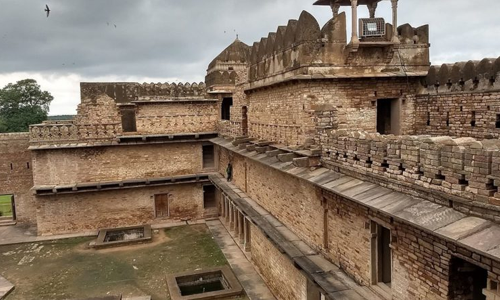 Location: Chanderi, Ashoknagar District
Location: Chanderi, Ashoknagar District
Why It’s Special:
- Unique Blend of Architectural Styles: Built and renovated by different dynasties, Chanderi Fort features elements of Rajput, Sultanate, and Mughal design.
- Historic Significance: Chanderi has been a strategic military outpost, controlling trade routes in central India for centuries.
- Nearby Attractions: Koshak Mahal, Jama Masjid, and Chanderi’s famous handloom weaving centers.
What to Expect:
The fort, perched on a hill overlooking the town, provides panoramic views of lush landscapes and ancient settlements. While exploring its ramparts and gateways, you’ll discover a tapestry of historical narratives, including legends of valor and resilience. Pair your fort exploration with a tour of local weaving workshops-Chanderi is famous for its exquisite sarees.
Ajaigarh Fort: Remnants of the Chandela Legacy
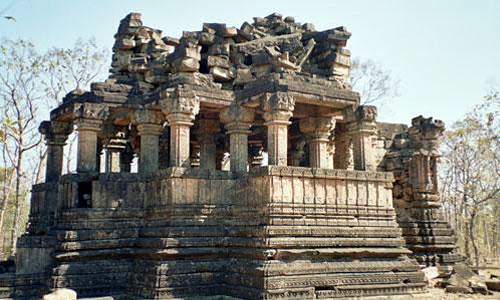 Location: Ajaigarh, Panna District
Location: Ajaigarh, Panna District
Why It’s Special:
- Chandela History: Constructed by the Chandela rulers who also built the renowned temples of Khajuraho.
- Spectacular Clifftop Location: Situated atop a steep hill, the fort offers breathtaking views of the Ken River and surrounding valleys.
- Hidden Treasures: Ancient sculptures, temples, and inscriptions within the fort premises.
What to Expect:
A journey to Ajaigarh Fort is perfect for those who enjoy offbeat treks and panoramic vistas. Although lesser visited, the fort’s ruins and temples still exhibit vestiges of Chandela artistry, making it a must-visit for history buffs. Ensure you bring comfortable shoes and enough water as the climb can be challenging, but the sweeping views make it entirely worthwhile.
Narwar Fort: An Overlooked Jewel of Shivpuri
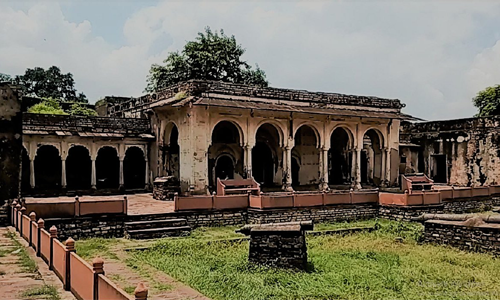 Location: Narwar, Shivpuri District
Location: Narwar, Shivpuri District
Why It’s Special:
- Ancient Roots: Its history reportedly dates back to the Kachhapaghata dynasty (10th to 12th century), making it one of the region’s older forts.
- Architectural Fusion: The fort features a blend of Rajput and Mughal elements, highlighting various cultural influences over the centuries.
- Scenic Setting: Surrounded by verdant hills and water bodies, creating a picturesque backdrop.
What to Expect:
Narwar Fort, though not as well preserved as some other forts, still bears grand gateways, intricate carvings, and a sprawling palace complex. Wander through its courtyards and halls to catch glimpses of faded frescoes and stone latticework. Since tourism here is minimal, you’re likely to have large sections of the fort all to yourself, perfect for photography or quiet contemplation of past eras.
Datia Palace (Bir Singh Palace): A Blend of Mughal and Rajput Artistry
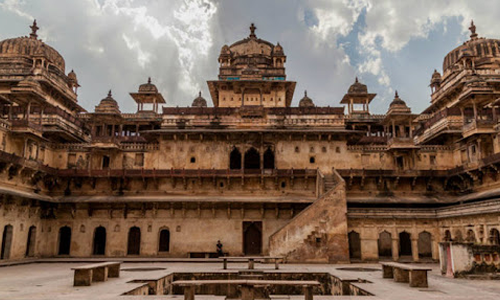 Location: Datia, near Gwalior
Location: Datia, near Gwalior
Why It’s Special:
- Seven-Story Marvel: Despite being called a “palace,” the building is largely unoccupied, serving more as a monumental testament to architectural design than a royal residence.
- Architectural Uniqueness: A striking blend of Mughal and Rajput influences in its domes, arches, and intricate ornamental work.
- Historic Patronage: Built in the early 17th century by Raja Bir Singh Deo, an ally of the Mughal emperor Jahangir.
What to Expect:
Datia Palace’s grandeur lies in its symmetry and detailed ornamentation. With multiple levels and an inner courtyard, you can spend hours exploring hidden rooms, balconies, and terraces that offer panoramic views of the surrounding countryside. While here, consider visiting nearby temples and local markets to fully experience Datia’s cultural charm.
Dhar Fort: A Legacy of Sultanate and Maratha Rule
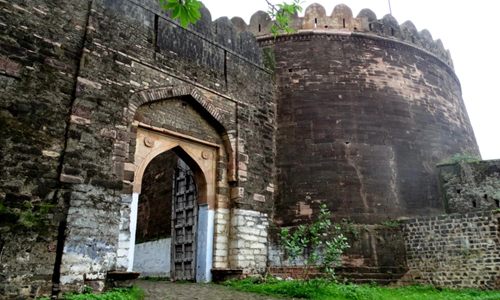 Location: Dhar, near Indore
Location: Dhar, near Indore
Why It’s Special:
- Sultanate Influence: Built primarily under the guidance of the Paramara dynasty, later modified by the Delhi Sultanate, and later the Marathas.
- Bhoj Shala: An important part of Dhar’s heritage, adjacent to the fort, known as a center for Sanskrit and learning.
- Historic Reservoirs: The fort premises contain ancient water systems and tanks, reflecting medieval engineering prowess.
What to Expect:
At Dhar Fort, you’ll witness how successive rulers left their mark through architecture-soaring arches, robust bastions, and partially eroded walls. The area around Dhar is also known for its diverse cultural tapestry, including the nearby Mandu region. Combining a visit to Dhar Fort with a day trip to Mandu can give you a broader perspective on medieval Malwa architecture and history.
Burhanpur’s Unexplored Palaces: Traces of Mughal Grandeur
 Location: Burhanpur, near the Maharashtra border
Location: Burhanpur, near the Maharashtra border
Why It’s Special:
- Gateway to the Deccan: Once a strategic stronghold for the Mughals, Burhanpur hosts several hidden palaces and monuments.
- Architectural Legacy: Mughal-era monuments like Shahi Qila, Raja ki Chhatri, and the partially ruined Ahukhana speak of the city’s royal past.
- Lesser Crowd: Few tourists make their way to Burhanpur compared to other Mughal hubs, allowing for an intimate historical experience.
What to Expect:
Burhanpur’s palaces and forts showcase classic Mughal architecture-grand gateways, delicate carvings, and expansive courtyards. If you’re fascinated by the Mughal era but want a break from the crowds at places like Agra, Burhanpur’s offbeat monuments offer a refreshing alternative. Don’t miss the city’s vibrant markets, which provide a glimpse into local life.
Practical Tips for Exploring Lesser-Known Forts and Palaces
- Research and Permissions:
Some forts and palaces may lie within private or protected territories. Always check if permissions or local guides are necessary. - Timing:
Plan your visit during cooler months (October–March) to explore comfortably. Early mornings or late afternoons offer the best light for photography. - Local Guides:
Hiring a local guide enhances your experience, offering stories and historical anecdotes you might not find in guidebooks. - Dress Comfortably:
Wear sturdy footwear, especially when trekking through hilly terrains or exploring ruins with uneven pathways. - Combine Destinations:
Many of these sites are within driving distance of popular tourist hotspots. For instance, Chanderi can pair well with a trip to Orchha; Datia is close to Gwalior and Jhansi. - Respect the Heritage:
Avoid littering or defacing walls. These monuments are integral to India’s cultural heritage and deserve responsible tourism.

Why These Destinations Matter
The lesser-known forts and palaces of Madhya Pradesh aren’t just architectural feats; they’re gateways into chapters of history often overshadowed by more famous monuments. By venturing off the typical tourist trails, you stand to gain:
- Deeper Cultural Insights: Smaller towns and lesser-known sites often retain local traditions and folklore.
- Community Engagement: Locals in these offbeat regions tend to be welcoming, eager to share stories about their heritage.
- Unique Photographic Opportunities: Quieter sites offer space for immersive photography without tourist congestion.
- Responsible and Sustainable Tourism: Spreading tourism across more destinations helps local economies while reducing pressure on popular landmarks.

Conclusion
Madhya Pradesh’s monumental heritage extends far beyond the well-publicized grandeur of its most famous landmarks. From the intriguing fortifications at Ajaigarh and Narwar to the Mughal splendor of Burhanpur, each offbeat destination tells stories of battles fought, dynasties that rose and fell, and a cultural fusion spanning centuries. Exploring these lesser-known forts and palaces not only satisfies your curiosity for history but also enriches your understanding of Madhya Pradesh’s tapestry of cultures.
So the next time you find yourself planning a trip across the “Heart of India,” take a detour off the conventional path. In those quiet corners, you’ll discover layers of history whispering through time, waiting to captivate and inspire every traveler who ventures to uncover them.
WELCOME TO KANHA NATIONAL PARK

